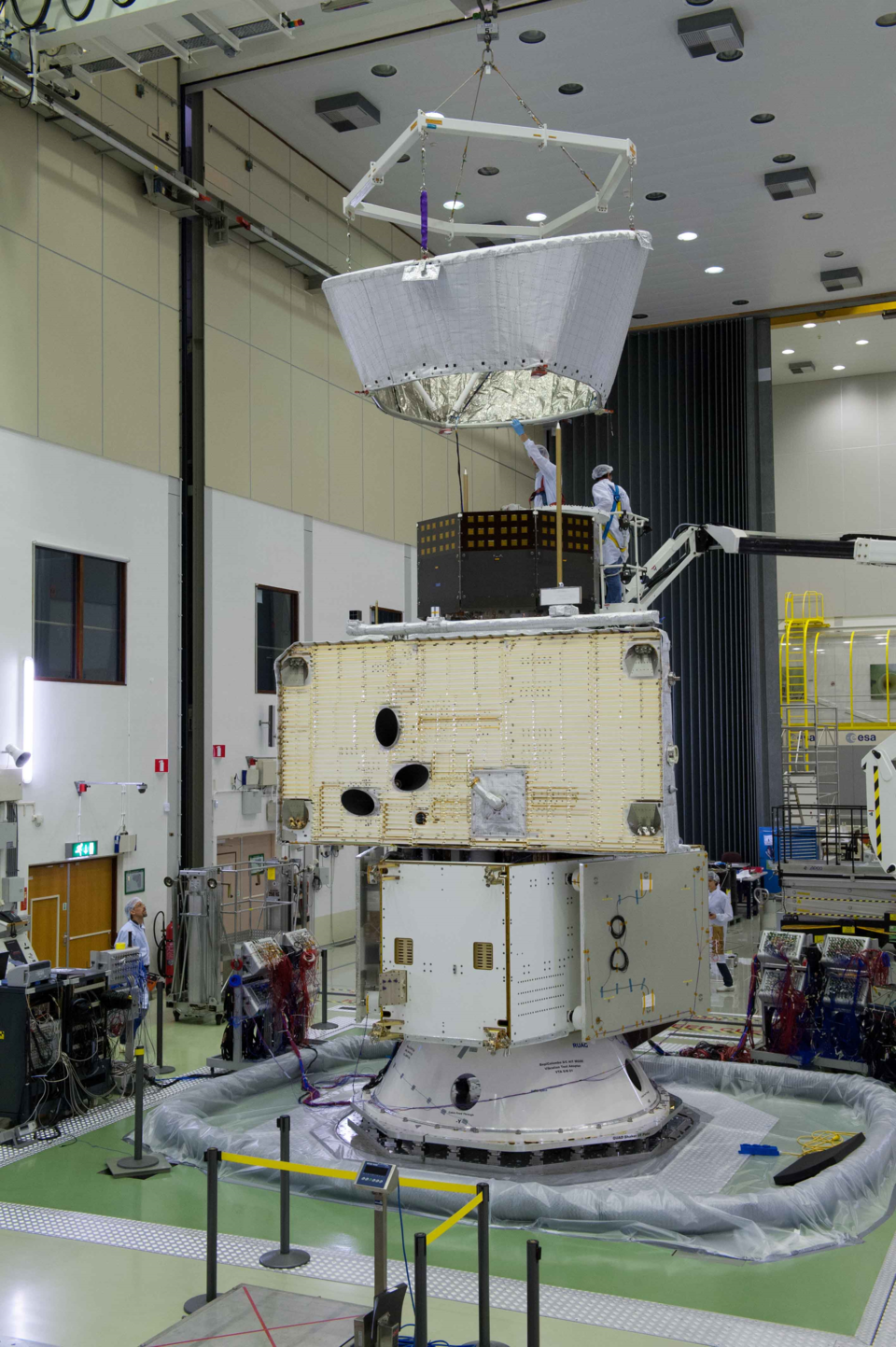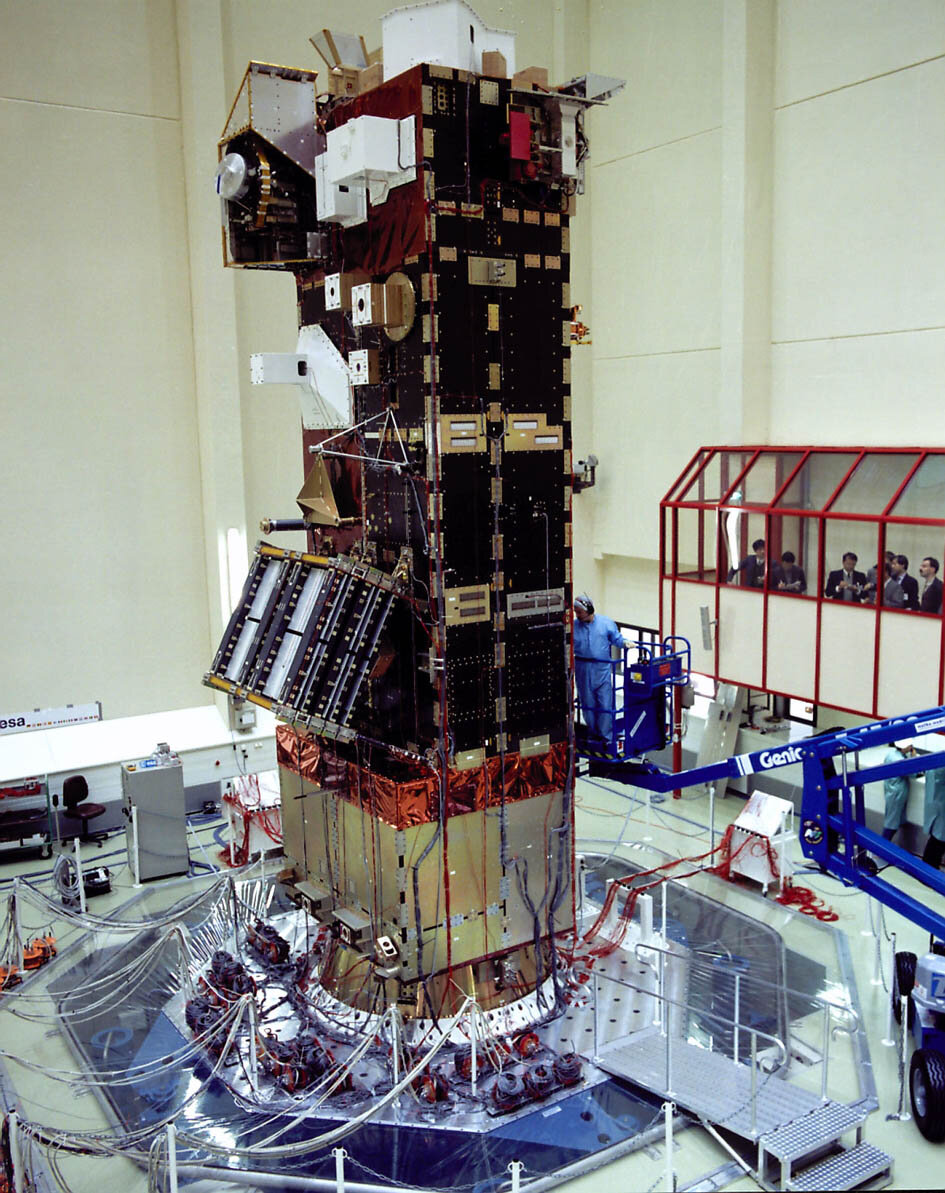Hydraulic shaker
What is it for?
The space industry demands the most rigorous vibration testing in the world. The first two minutes of a satellite's space flight are the toughest, as it experiences the extreme vibration of launch. It is essential to test satellites and their component parts in advance of the launch to ensure they will not be shaken to pieces.
The multi-axis vibration test facility HYDRA complements the Electrodynamic shakers, increasing the spectrum of vibration testing available to ESTEC Test Centre customers. It is capable of generating vibrations equivalent to an earthquake of 7.5 on the Richter scale.
What kind of testing does it support?
As with the Electrodynamic shakers, both design qualification and acceptance vibration tests are performed using HYDRA, in sine, random and shock modes.
It also has the capability to perform long and complex transient excitations made up of a series of brief single pulses which are less likely to cause damage to the test item. And compared to the other vibration facilities it can:
- Test much larger test specimens
- Test much heavier test specimens
- Test in any direction without changing the configuration
- Test with larger displacements
- Test at lower frequencies
Continue reading below
What are its features?

HYDRA is unique in being able to perform mechanical vibration tests at frequencies between 1-100 hertz in all axes of motion (translation and rotation) simultaneously. This allows engineers to test specimens along both the vertical and lateral axis with a single test set-up.
The test envelope that can be covered by HYDRA covers acceleration ranges from 20 milli-g to 3g in the frequency band 1-100 hertz. At frequencies above 20 hertz accelerations of up to 5g have been achieved.
Engineers designed and developed the vibration and control computer subsystem for HYDRA. It is based on online test value calculations for the control signal of the servo valves, taking the geometrical arrangement of the servo actuators and the test table into consideration. The processing power of the vibration and control computer is provided by 36 digital signal processors operating in parallel which interface with the operator through several PCs.
To control the required excitation, 12 piloting sensors are mounted in four three-axial cubes close to the test specimen interface. Up to 16 additional notching sensors limit the excitations at certain locations on the test specimens to guarantee its safety.
What benefits does it deliver?

The largest satellite shaker in Europe, HYDRA has subjected the largest ESA spacecraft to vibration testing over the course of the last decade, from the Envisat Structural Model in 1997 to the Herschel Spacecraft Structural Model in 2007. The largest spacecraft tested so far is the Automated Transfer Vehicle Jules Verne, in 2002. It weighed 22 tonnes with its propellant tanks full.
HYDRA's ability to perform long and complex transient excitation has been used for aeronautic tests by Airbus teams. This six degrees of freedom transient testing is expected to lead to significantly lower test loads than is currently the case. It can be implemented as soon as satellite programmes are ready to apply this new test method.
For more information
Please contact Gaetan Piret, ESTEC Test Centre Manager:
Gaetan.Piret @ esa.int


